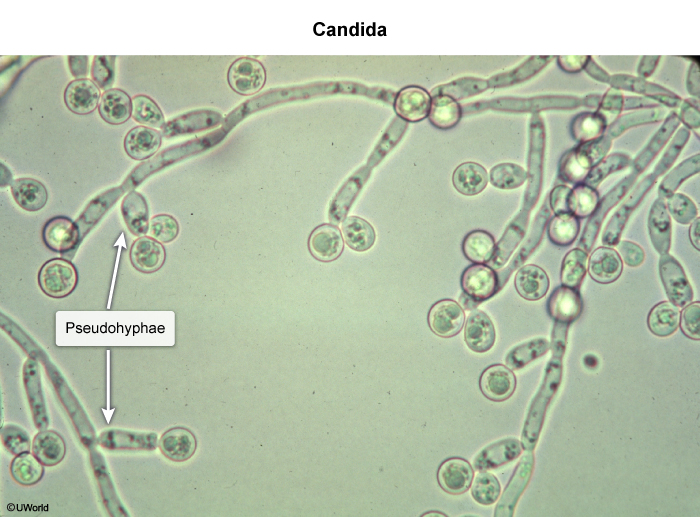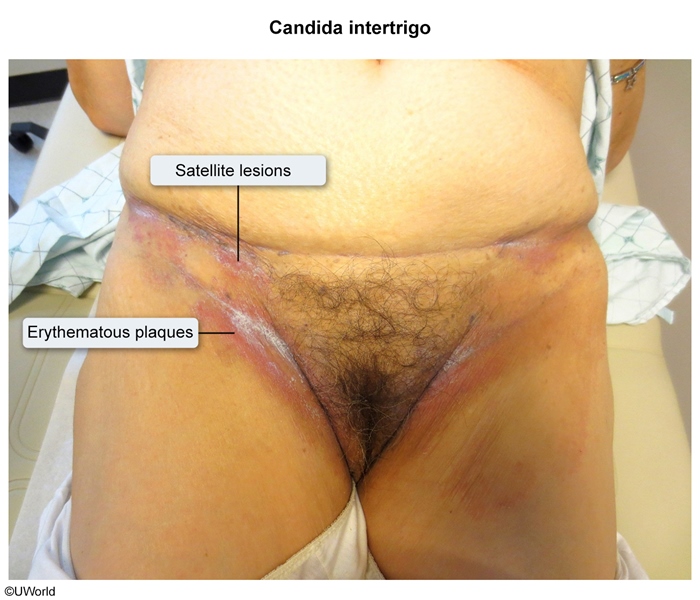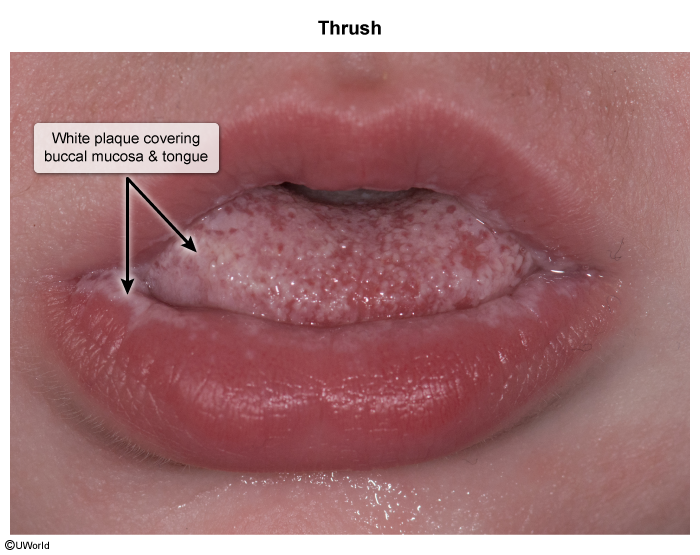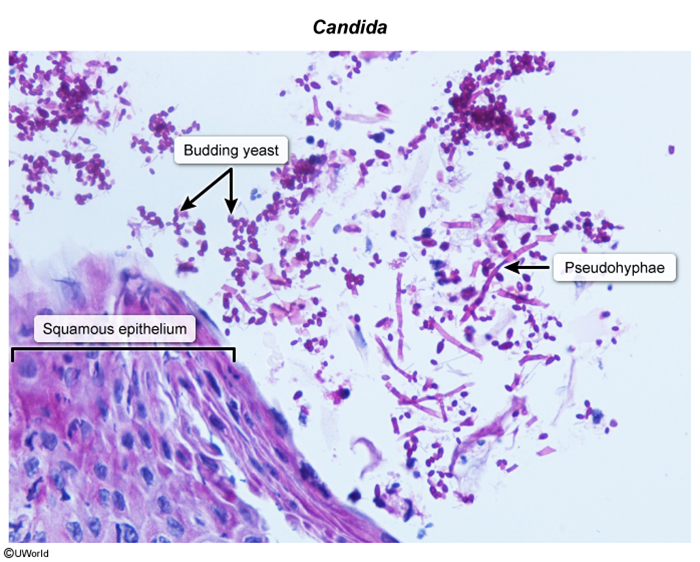Candida Infections
Article Sections
Introduction
Candida infections encompass a broad spectrum of clinical syndromes caused by yeasts of the Candida genus, most notably C albicans. Candida can develop as (Figure 1):
- Budding yeasts.
- Pseudohyphae (Image 1): filament-like structures, resulting from the elongation of budding yeast, with constrictions.
- Hyphae ("germ tubes"): filamentous structures separated by septae (rather than constrictions).
These fungi are common commensals, residing harmlessly on human mucosal surfaces, skin, and within the gastrointestinal and genitourinary tracts. However, disruptions in the local microbial flora, damage to mucosal integrity, or weakened immunity can allow Candida to proliferate and become pathogenic. Clinical manifestations can range from mild, superficial mucocutaneous infections (eg, oral thrush, vulvovaginitis) to severe, life-threatening systemic infections (eg, candidemia).
Pathophysiology and risk factors
C albicans is the most implicated species of the approximately 20 that cause infections in humans. Other notable species include
Continue Learning with UWorld
Get the full Candida Infections article plus rich visuals, real-world cases, and in-depth insights from medical experts, all available through the UWorld Medical Library.
Figures
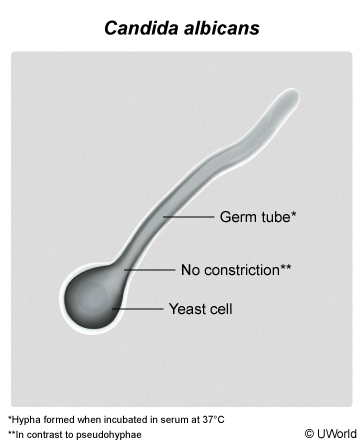
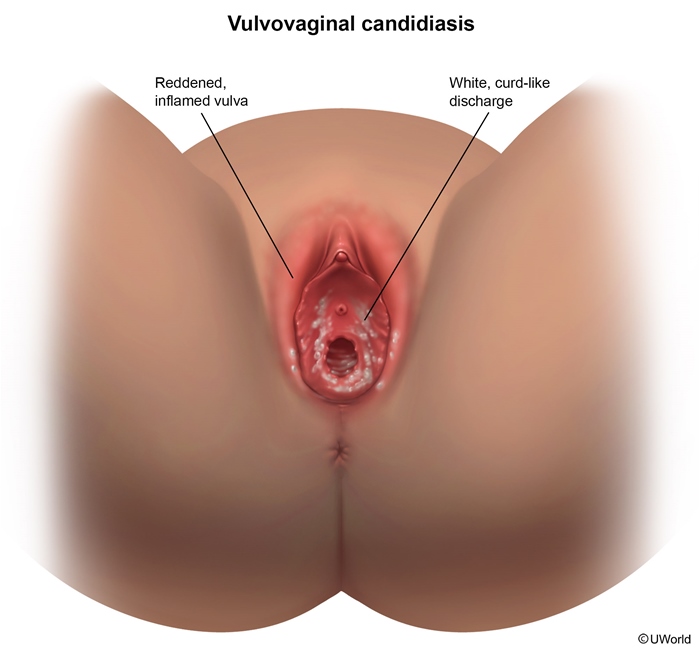
Images
